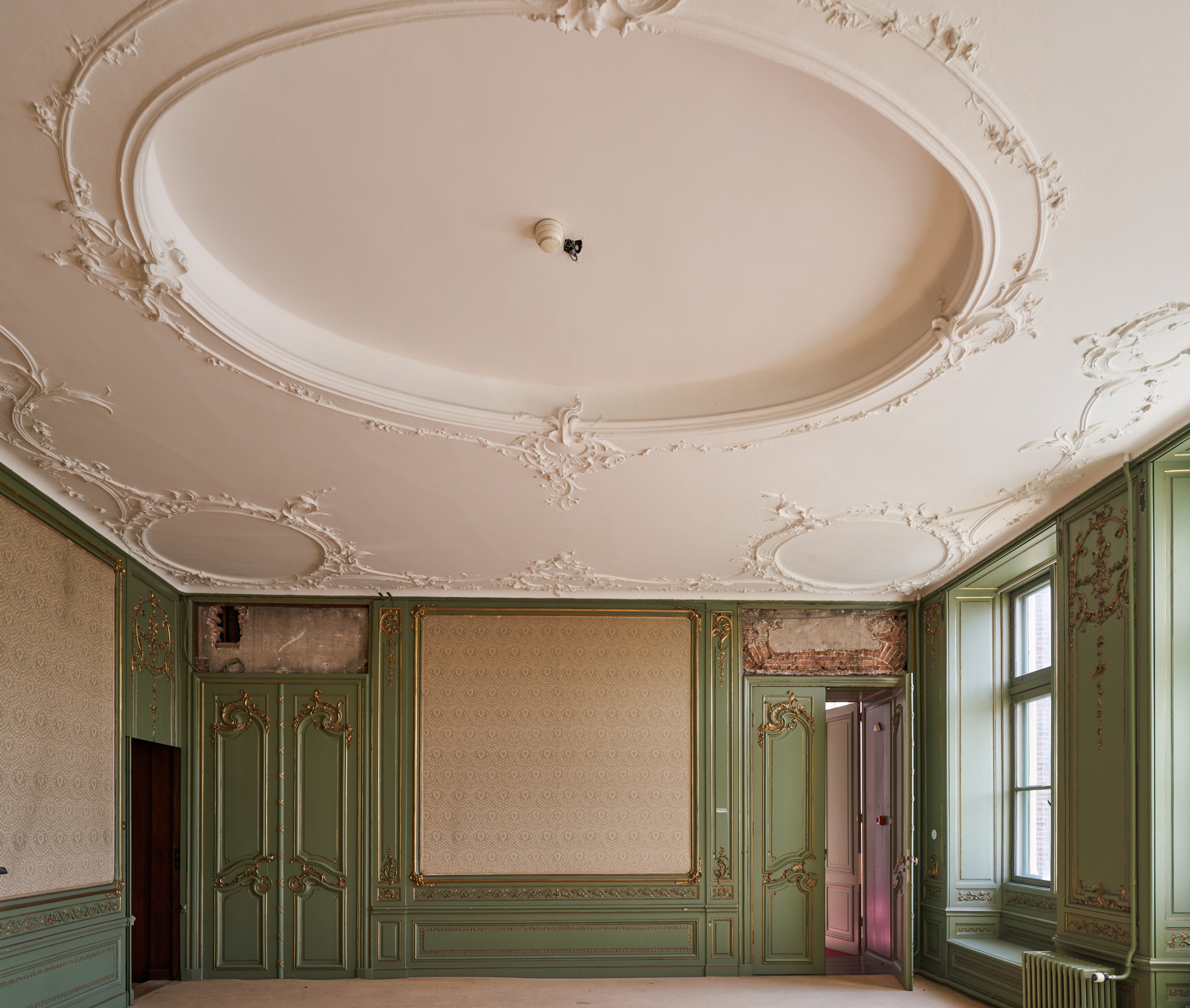Renovation of the Binnenhof

| Client | Rijksvastgoedbedrijf |
| Completion time | Since 2021 |
| Market | Government buildings |
| Team | |
| In collaboration with | Team Merk X |
| Location | The Hague |
| Project scope | 89,000 m2 |
| Expertises | |
“Here history lies in layers.”
Through intercession of ABT, foundation research was carried out from late 2021 to early 2022 supervised by archaeologists from the archaeological service of the municipality of The Hague. This research was necessary to further develop the design. Indeed, the construction levels and condition of the foundations were largely unknown. The Binnenhof represents eight centuries of history, including its underground. This has led to remarkable finds during the foundation surveys. One of these is the heavy foundation of a medieval stair tower. The excavation is part of the Knights’ Hall which previously stood on the site of the Senate building.
Finds like these have their impact on designs. This shows that research is very valuable. During research, archaeologists found a perfectly good jug. They believe it is a proto-stoneware drinking jug from around 1270. It was probably laid there as a ritual act at the start of construction to wish the building prosperity. ABT structural engineer Earnest Alderliesten: “Then we just stand and watch. Here history lies in layers.”
Senate
On account of our positive contribution, the State Property Company asked ABT to also provide the architectural elaboration of the Senate (indicated as Complex Part 1 of the Binnenhof Renovation) in BIM and the associated design coordination.
“One thing leads to the other,” structural engineers Earnest Alderliesten and Willem Klaverveld explain. “We are now also involved in the design process of a new canal and bridge, the structural design and design coordination for a viewpoint at the Buitenhof, and we are conducting the supervision of the foundation research for the renovation of the Binnenhof.” The new canal is not really new. The Hofgracht, which was filled in at the end of the 19th century, will be restored to the Buitenhof side of the Binnenhof. The government building will remain accessible through the Stadhouderspoort via a bridge.
Council of State
In late 2020, ABT was asked to provide the architectural detailing in BIM and integral coordination with installations and structures for the Council of State part of the renovation (also part of Complex part 1).
The Council of State stands in one of the oldest parts of the Binnenhof. The complex actually consists of a multitude of intertwined building sections with different building principles. These have been remodeled several times over the years so no consistent drawings are currently available. The use of a BIM model allows us to coordinate design interventions integrally within the existing context. This provides a clear understanding of what we do not yet know and need to investigate.
BIM
The Central Government Real Estate Agency are getting the Binnenhof scanned inside and out by ROOT for a so-called Building Information Model (BIM). This 3D representation of the building complex can be used by architects, construction companies and others.
“As an engineering firm, we are adopting a proactive role in bringing together design disciplines in BIM,” explains structural engineer Jesper Goorden.
As several users are housed within the same building section at Binnenhof, complex issues of structures, installations and fire safety occur. BIM facilitates the detailing and alignment of these common elements between users, as well as between different design disciplines. The latter in particular for the incorporation of the large amount of installations in the monumental complex. This was worked out in detail in the model with the consulting firm engineers, to reduce any construction risks. The translation to BIM resulted in the necessary design adjustments in this regard.”














